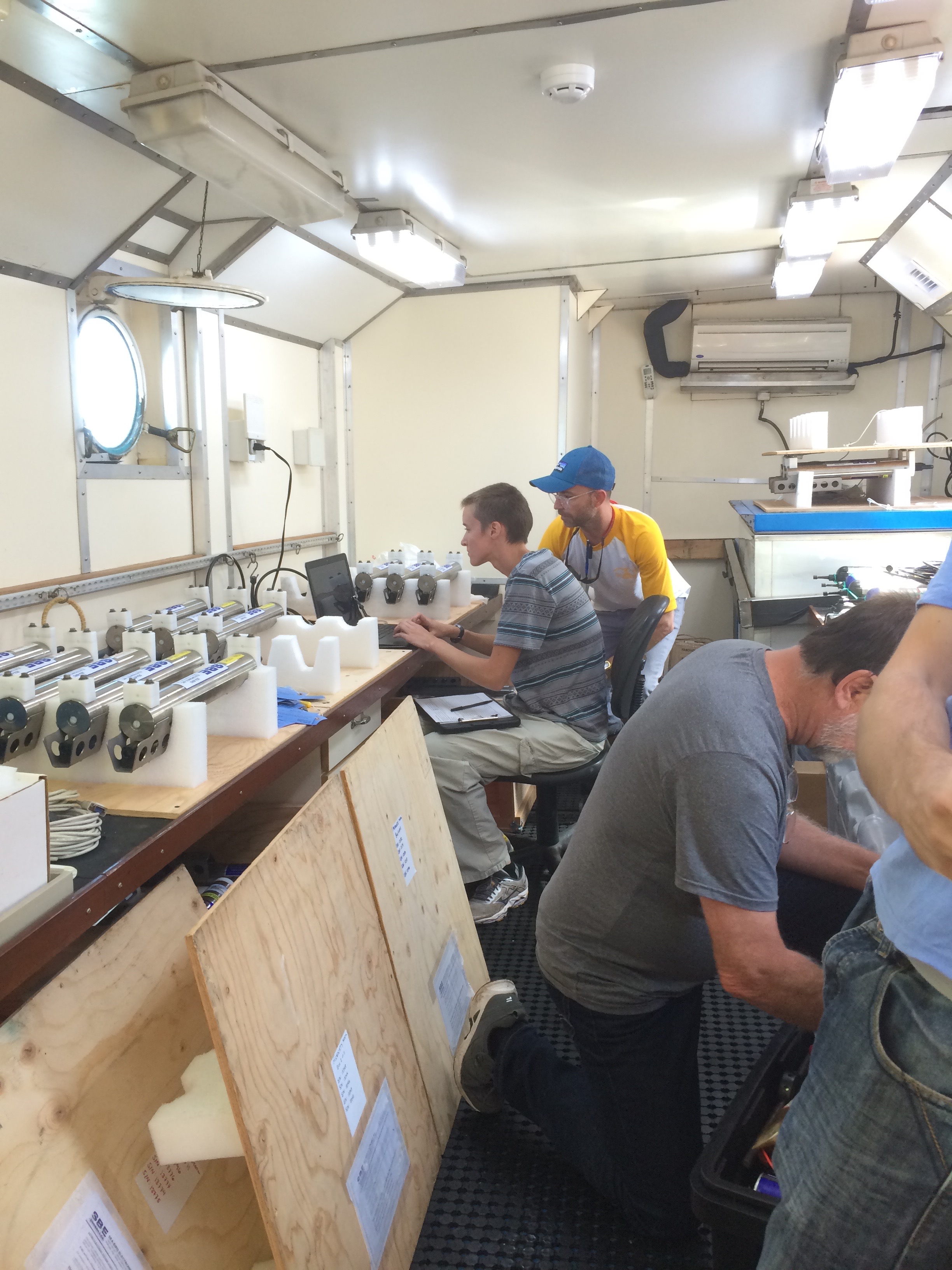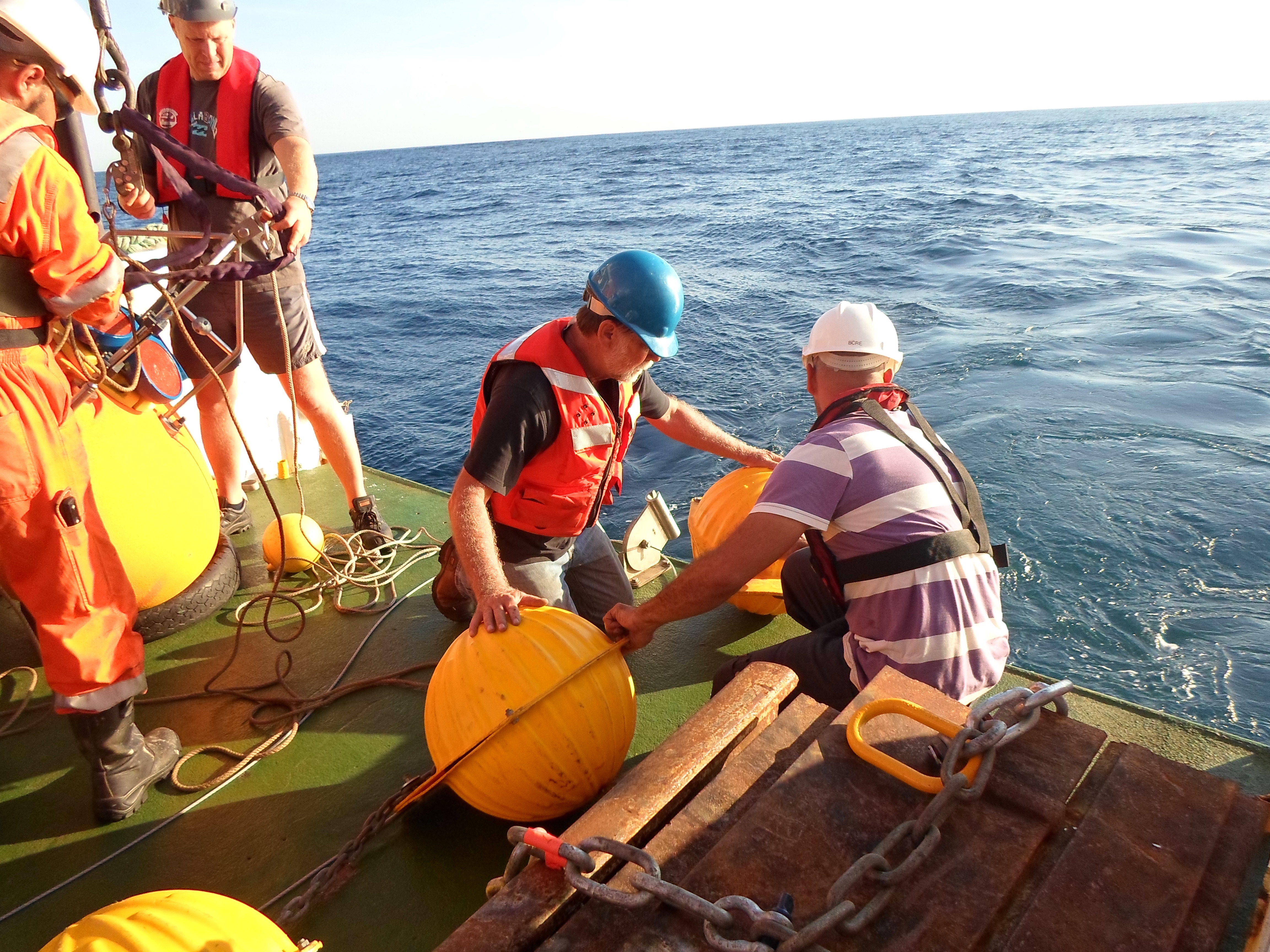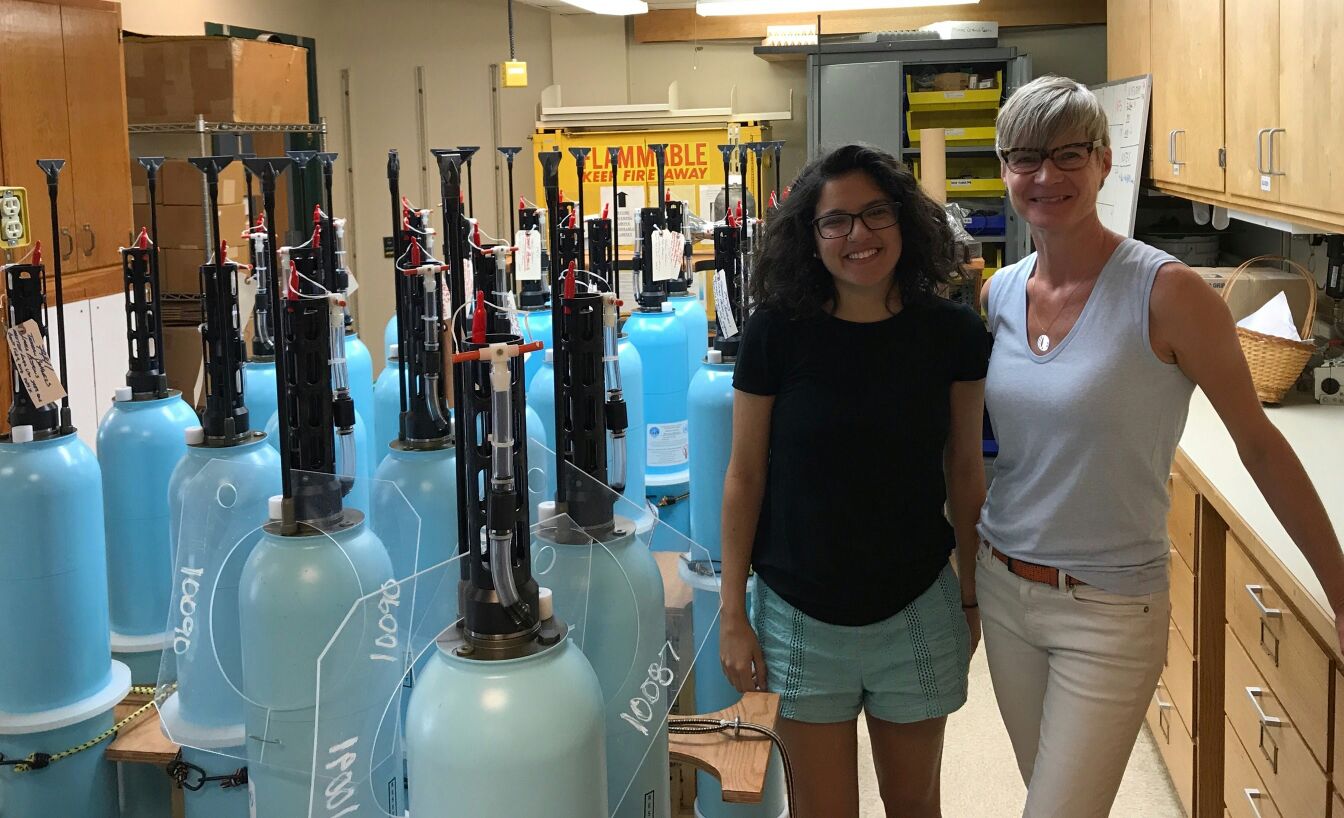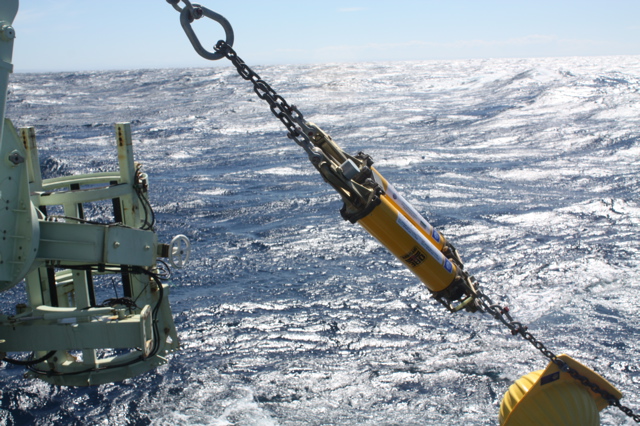Different instruments measure the temperature, conductivity, and velocity of the ocean. Each instrument has it's own pros and cons, and we use a variety of different instruments, depending on the question we are asking, the part of the ocean we are studying, and the timescales that we want to study.

CTD is an acronym for the parameters that this device measures: “Conductivity (salinity), Temperature, and Depth.” Water temperature and salinity are important to oceanographers because they affect the movement of the water column, and thus the overall ocean circulation.
The CTD itself is a set of small probes attached to a large metal frame. The frame is lowered on a cable down to the seafloor, and scientists observe the water properties in real time via a conducting cable connecting the CTD to a computer on the ship.
Other attachments on the CTD package include Niskin bottles (gray bottles in image) that collect water samples at discrete depths for measuring chemical properties, Acoustic Doppler Current Profilers that measure the horizontal velocity (yellow instrument on side), and oxygen sensors that measure the dissolved oxygen content of the water.

MicroCATs measure conductivity and temperature. Some microCATs can be deployed as deep as 7000 m. From conductivity and temperature, we can calculate salinity. Temperature and salinity allow us to calculate heat and freshwater transport.

CPIES stands for current and pressure inverted echosounder. It measures bottom current and pressure, as well as acoustic echo time from the sea bed to the sea surface. Using this data, along with some information about "typical" temperature and salinity in the region, we can estimate profiles of temperature and velocity, of the entire water column. If there are both CPIES and current meters in the same area, we can compare the results from each instrument to estimate the errors.

A mooring is an instrument, or series of instruments, attached along a cable that extends over a portion of the water column. A flotation buoy at the top of the mooring keeps the cable taught, and a heavy anchor at the bottom keeps the mooring from moving around. A variety of instruments can be attached to the mooring line, such as temperature or salinity sensors and current meters, which measure how fast the water is moving. These instruments collect data at specific time intervals and store the data until the mooring is recovered at a later date.

Argo floats are autonomous, free floating instruments. They are originally deployed from a ship, but after that they travel with ocean currents to obtain a more or less random sampling of the ocean. They spend 10 days floating at 1000 m depth, then they sink to 2000 m, and measure temperature and conductivity as they rise to the surface. At the surface, they send the data along with their position to satellites. This allows scientists to track what is happening in the ocean even when there aren't ships in a given region. There are 3000 - 4000 Argo floats in the ocean at any given time.

Nortek current meters measure current velocity at a given point. Unlike ADCPs, which measure current velocity from the instrument to the surface, Nortek current meters only give us velocity at the point at which they are located. However, this is very helpful to determine what the current is doing at depths below the ADCPs.

An Acoustic Doppler Current Profiler (ADCP) is a current meter that measures ocean velocity using the physical principle of Doppler Shift.
What is Doppler Shift? — Have you ever noticed how a police car siren sounds higher pitch when it's approaching than compared to when it’s receding? The speed of the vehicle changes the frequency of the siren’s sound by compacting or extending the sound waves.
An ADCP has three or four acoustic heads, or transducers, to emit acoustic beams in different directions in order to measure ocean velocities in all three directions: northward, eastward, and vertical. Each acoustic beam penetrates a few hundred metres through the water column, with sound reflecting back to the instrument from particles in the water column along the way. The Doppler shift of the return signal tells us how fast the particles are moving, and therefore, how fast the ocean is moving. On the Research Vessel Melville, one ADCP is mounted in the hull of the ship and continuously measures ocean velocity down to 800m deep, even while the ship is moving. During the ACT Cruise, ADCPs are deployed in big floats on the top of each of the moorings to profile the upper water column. Another ADCP will be mounted on the CTD frame to measure full-depth ocean velocities.

Drifters are another kind of autonomous instrument. After being deployed from a ship, they float at the ocean's surface, periodically sending their location to a satellite. This allows scientists to track the velocity of the ocean surface. Drifters are very useful in areas where it is difficult to take ships, due to weather or piracy. Drifters can also be very helpful for tracking currents and motions that aren't steady in time, such as Agulhas Leakage.

Acoustic releases are not exactly an instrument: they don't record any data. However, they are essential for us to locate and recover our moorings. We can figure out where a mooring is by triangulating the acoustic release, pinging it from different locations and determining how far away it is. Then, when it comes time to recover the mooring, we can send a signal to the acoustic release to let go. This allows the mooring to float to the surface, and we can bring the mooring instruments on board to download their data. Acoustic releases are so important that we put two at the bottom of each mooring. That way, if one fails, we can send a release signal to the other one and still be able to recover our instruments.












